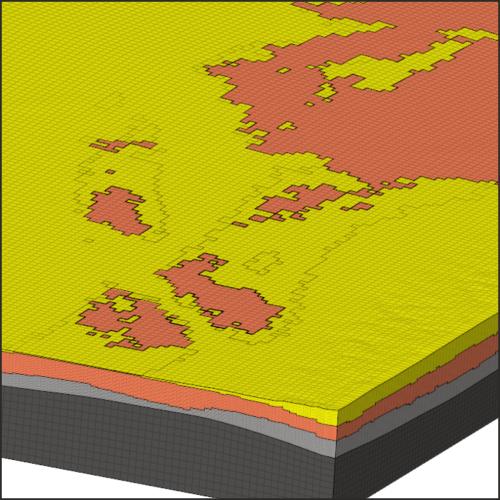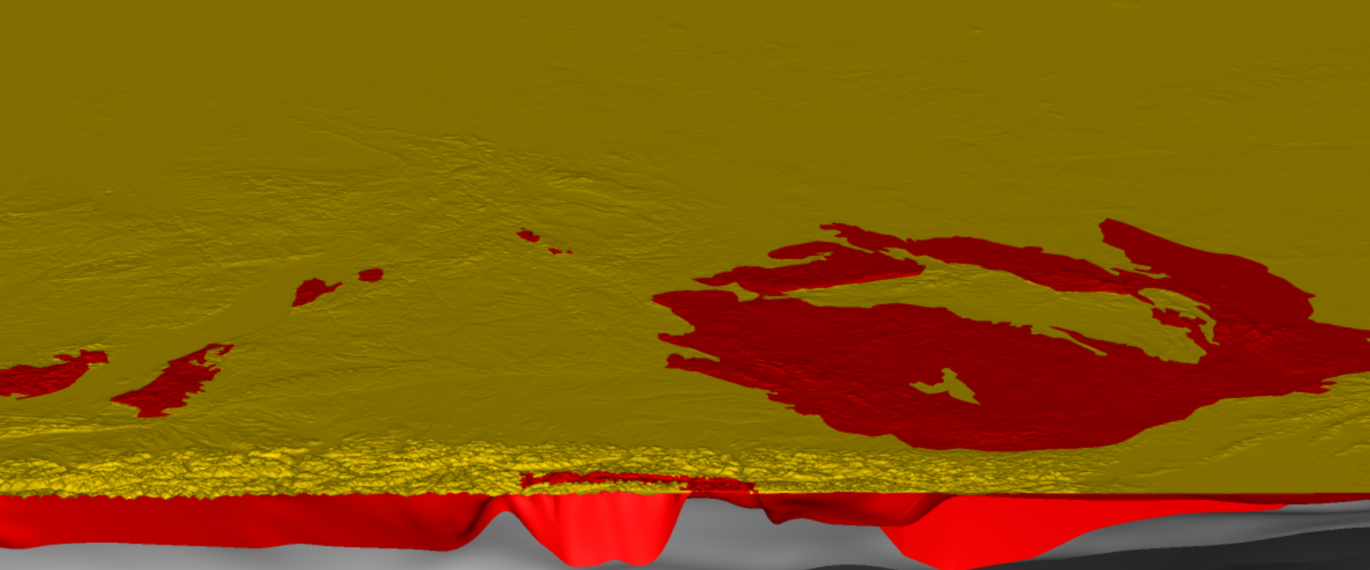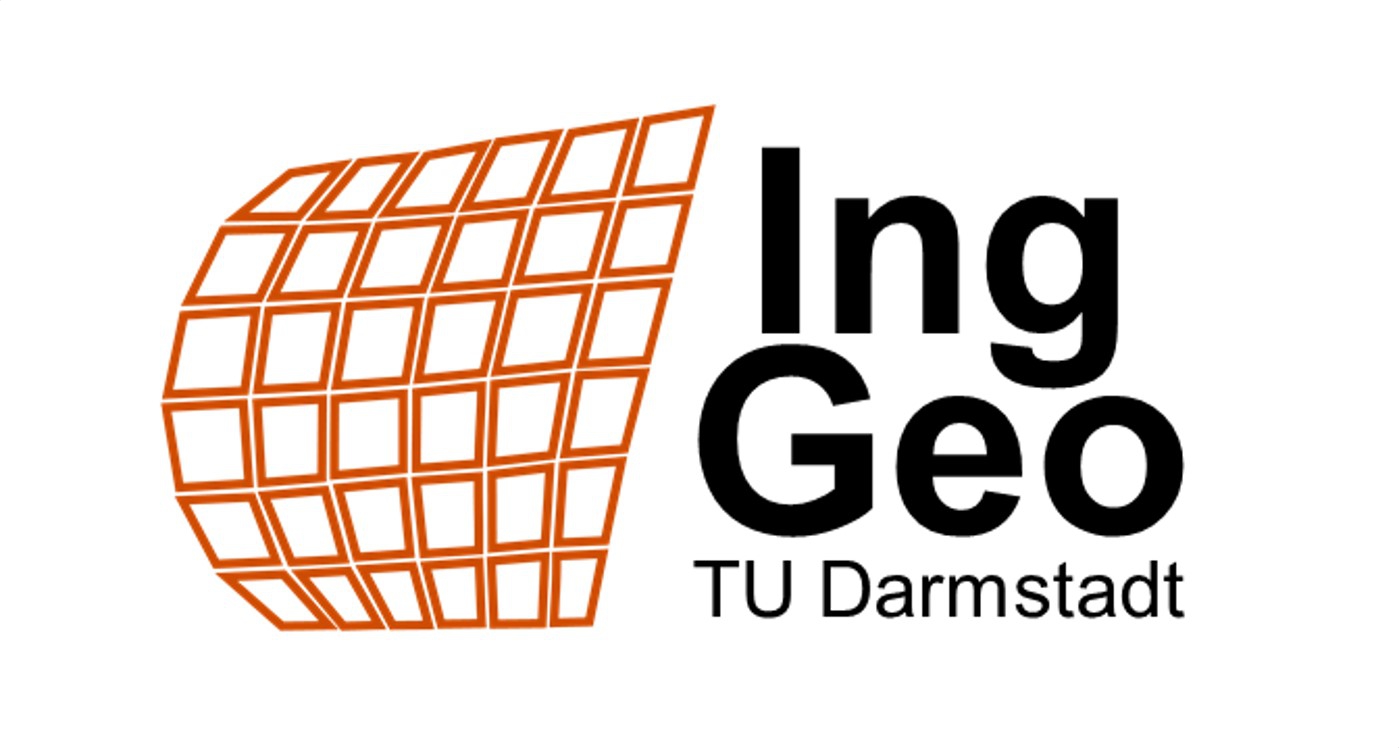
Facts about the project
Project manager: Dr. Steffen Ahlers PhD project: Victoria Kuznetsova +++ Duration: 01.04.2022 – 31.03.2026 +++ Project funding: Bundesgesellschaft für Endlagerung (BGE), Peine
Knowledge of the tectonic stress state is an essential information for the site selection process. In the first work package, the project aims at the further development of the geomechanical-numerical stress model for Germany (Ahlers et al., 2022). This stress model of Germany can be used, among other things, for sub-area and large-scale regional comparisons, but also provides the necessary boundary conditions for more detailed regional models. Appropriate submodeling techniques for consistent linking of different model scales will be further developed in a second work package. In the third work package, the different measurement methods for the determination of stress magnitudes will be evaluated and generally applicable recommendations for the optimization of exploration programs with respect to the parameterization and calibration of geomechanical-numerical modeling will be developed. Overall, the four-year R&D project will provide all basic principles and modeling tools required for a robust prediction of the in situ stress state of Germany.
During the SpannEnD projekt (www.spannend-projekt.de), a 3D stress model of Germany was created for the first time, taking into account published structural models and geomechanical data, and calibrated with stress magnitudes and orientations using measured point data (Fig. 1; Ahlers et al., 2022). This model can already explain large-scale properties of the observed stress tensor and numerous local measured data. However, especially in parts of NE and SE Germany, it also still exhibits significant deviations potentially due to lithology changes (heterogeneities in mechanical properties) and discontinuities not previously integrated in the model.
The prediction of field sizes in the geosciences usually faces the problem that they are controlled by long-wavelength processes such as plate tectonics, but at the same time high resolution is required for practical application at the site scale. In order to consistently model field quantities across different scales, a multi-scale approach (Fig. 2) will be further developed. This approach has already been successfully implemented in 3D kinematic models, i.e., for displacements (e.g., Hergert et al., 2011). In contrast, the transfer of 3D stresses across spatial scales has not yet been extensively studied. A first test for the use of the multi-scale approach for 3D stress models is shown by Ziegler et al. (2016).
For the search of a desposit, the requirements for exploration programs – for geomechanical data and in situ stress measurements – are significantly different from those of the hydrocarbon industry. In particular, the target horizon is generally shallower – at 300-1500 m below ground surface – and the host rocks have significantly different geomechanical properties than those of hydrocarbon reservoirs. In addition, besides the target horizon, i.e. the host rock, the strata in the overburden and underburden must also be geomechanically assessed, since those play an important role for geotechnical issues in repository construction, but also in modeling long-term safety, e.g. with respect to erosion or loads due to glaciation cycles. Likewise, the demands on the accuracy of model results are higher, so that the choice and planning of measurement programs in boreholes or their optimal localization in terms of parameterization and calibration of geomechanical models represent special challenges. Another central issue, which is controversially discussed in the literature, is the influence of faults on the components of the stress tensor (Yale, 2003). So far, there is a lack of systematic work focusing on these issues relevant for site selection providing robust statements.
- Ahlers, S., Röckel, L., Hergert, T., Reiter, K., Heidbach, O., Henk, A., Müller, B., Morawietz, S., Scheck-Wenderoth, M., and Anikiev, D.: The crustal stress field of Germany: a refined prediction, Geotherm Energy, 10, https://doi.org/10.1186/s40517-022-00222-6, 2022.
- Hergert, T. and Heidbach, O.: Geomechanical model of the Marmara Sea region-II. 3-D contemporary background stress field, Geophys. J. Int., 185, 1090–1102, https://doi.org/10.1111/j.1365-246X.2011.04992.x, 2011.
- Yale, D. P.: Fault and stress magnitude controls on variations in the orientation in situ stress, in: Fracture and in-situ stress characterization of hydrocarbon reservoirs, edited by: Ameen, M. S., Geological Society of London, London, 55–64, https://doi.org/10.1144/GSL.SP.2003.209.01.06, 2003.
- Ziegler, M. O., Heidbach, O., Reinecker, J., Przybycin, A. M., and Scheck-Wenderoth, M.: A multi-stage 3-D stress field modelling approach exemplified in the Bavarian Molasse Basin, Solid Earth, 7, 1365–1382, https://doi.org/10.5194/se-7-1365-2016, 2016.
Status Quo & Outlook
The project started on 01.04.2022.










